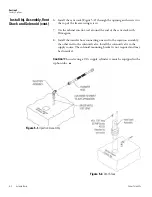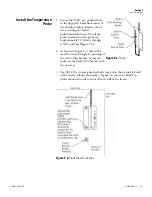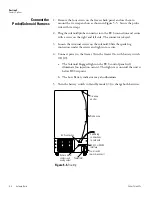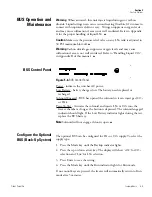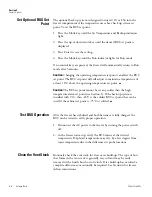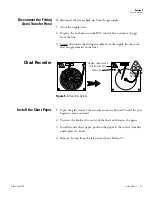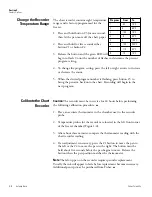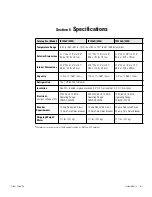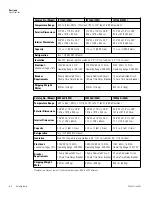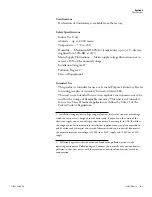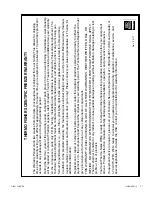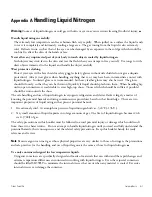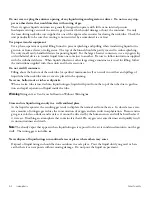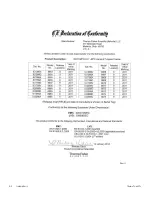
A-2
Isotemp Basic
Fisher Scientific
Do not cover or plug the entrance opening of any liquid nitrogen refrigerator or dewar. Do not use any stop-
per or other device that would interfere with venting of gas.
These cryogenic liquid containers are generally designed to operate with little or no internal pressure.
Inadequate venting can result in excessive gas pressure which could damage or burst the container. Use only
the loose-fitting necktube core supplied or one of the approved accessories for closing the necktube. Check the
unit periodically to be sure that venting is not restricted by accumulated ice or frost.
Use proper transfer equipment.
Use a phase separator or special filling funnel to prevent splashing and spilling when transferring liquid nitro-
gen into or from a dewar or refrigerator. The top of the funnel should be partly covered to reduce splashing.
Use only small, easily-handled dewars for pouring liquid. For the larger, heavier containers, use a cryogenic liq-
uid withdrawal device to transfer liquid from one container to another. Be sure to follow instructions supplied
with the withdrawal device. When liquid cylinders or other large storage containers are used for filling, follow
the instructions supplied with those units and their accessories.
Do not overfill containers.
Filling above the bottom of the necktube (or specified maximum level) can result in overflow and spillage of
liquid when the necktube core or cover is placed in the opening.
Never use hollow rods or tubes as dipsticks.
When a warm tube is inserted into liquid nitrogen, liquid will spout from the top of the tube due to gasifica-
tion and rapid expansion of liquid inside the tube.
Warning
Nitrogen Gas Can Cause Suffocation Without Warning!
s
Store and use liquid nitrogen only in a well-ventilated place.
As the liquid evaporates, the resulting gas tends to displace the normal air from the area. In closed areas, exces-
sive amounts of nitrogen gas reduce the concentration of oxygen and can result in asphyxiation. Because nitro-
gen gas is colorless, odorless and tasteless, it cannot be detected by the human senses and will be breathed as if
it were air. Breathing an atmosphere that contains less than 18% oxygen can cause dizziness and quickly result
in unconsciousness and death.
Note
The cloudy vapor that appears when liquid nitrogen is exposed to the air is condensed moisture; not the gas
itself. The issuing gas is invisible.
s
Never dispose of liquid nitrogen in confined areas or places where others may enter.
Disposal of liquid nitrogen should be done outdoors in a safe place. Pour the liquid slowly on gravel or bare
earth where it can evaporate without causing damage. Do not pour the liquid on pavement.
Summary of Contents for Isotemp Basic -86C
Page 17: ......
Page 29: ......
Page 41: ......
Page 47: ...A 4 Isotemp Basic Thermo Scientific ...
Page 48: ...Fisher Scientific 300 Industry Drive Pittsburgh PA 15275 USA www fishersci com ...

